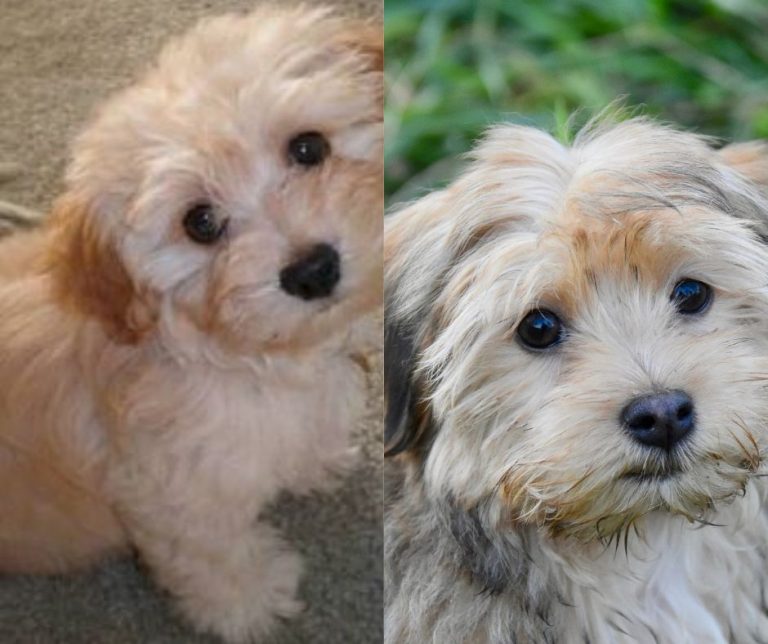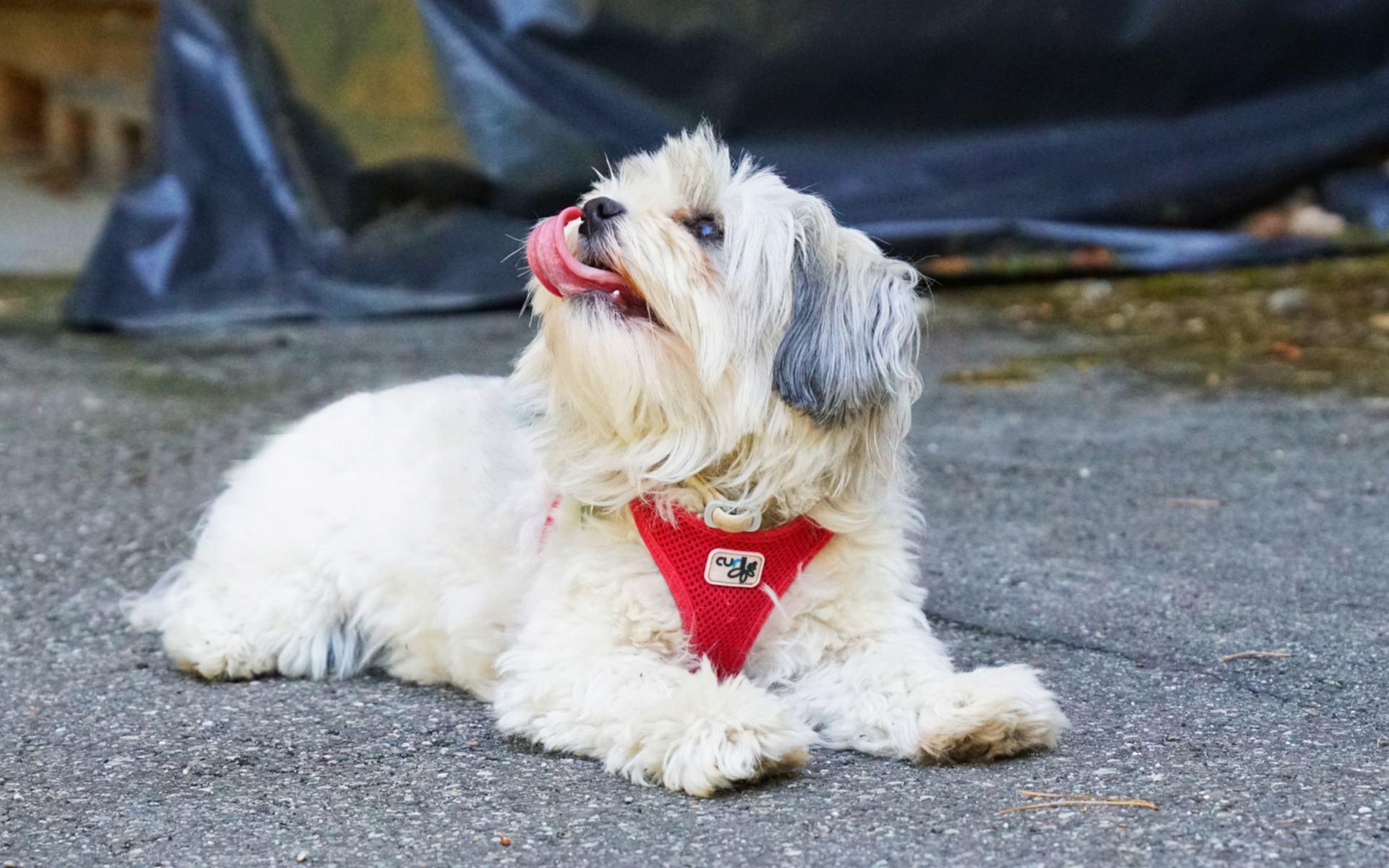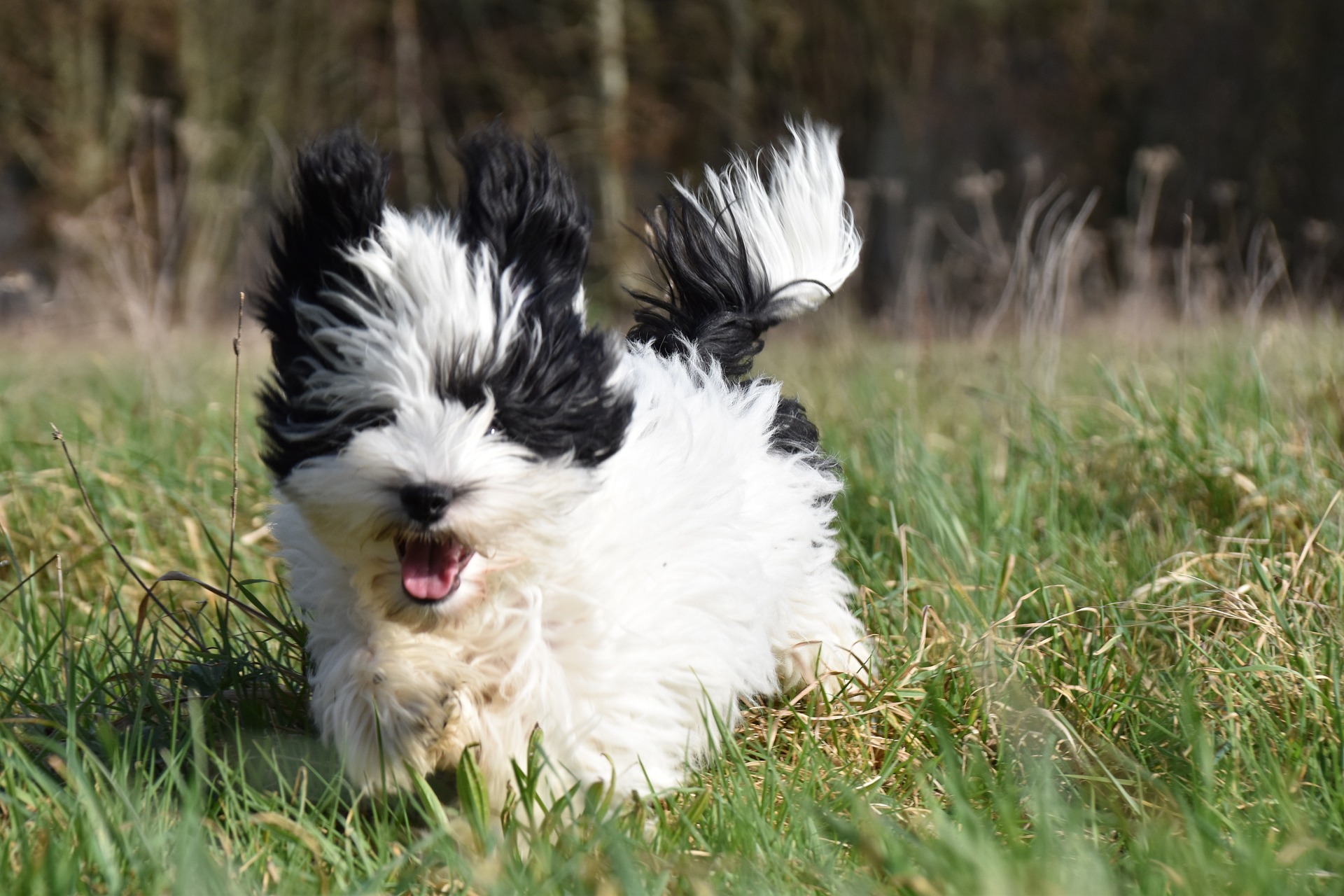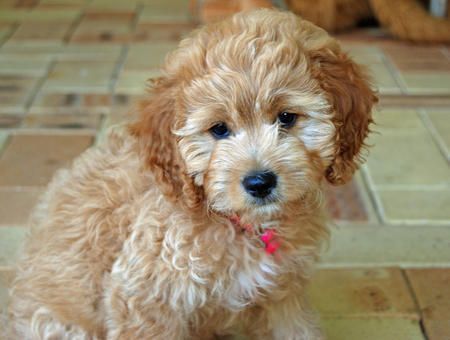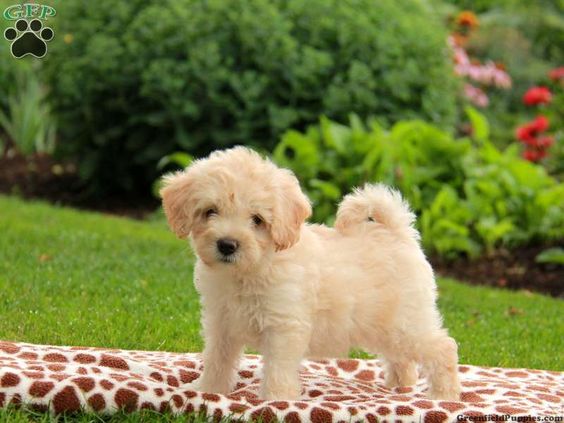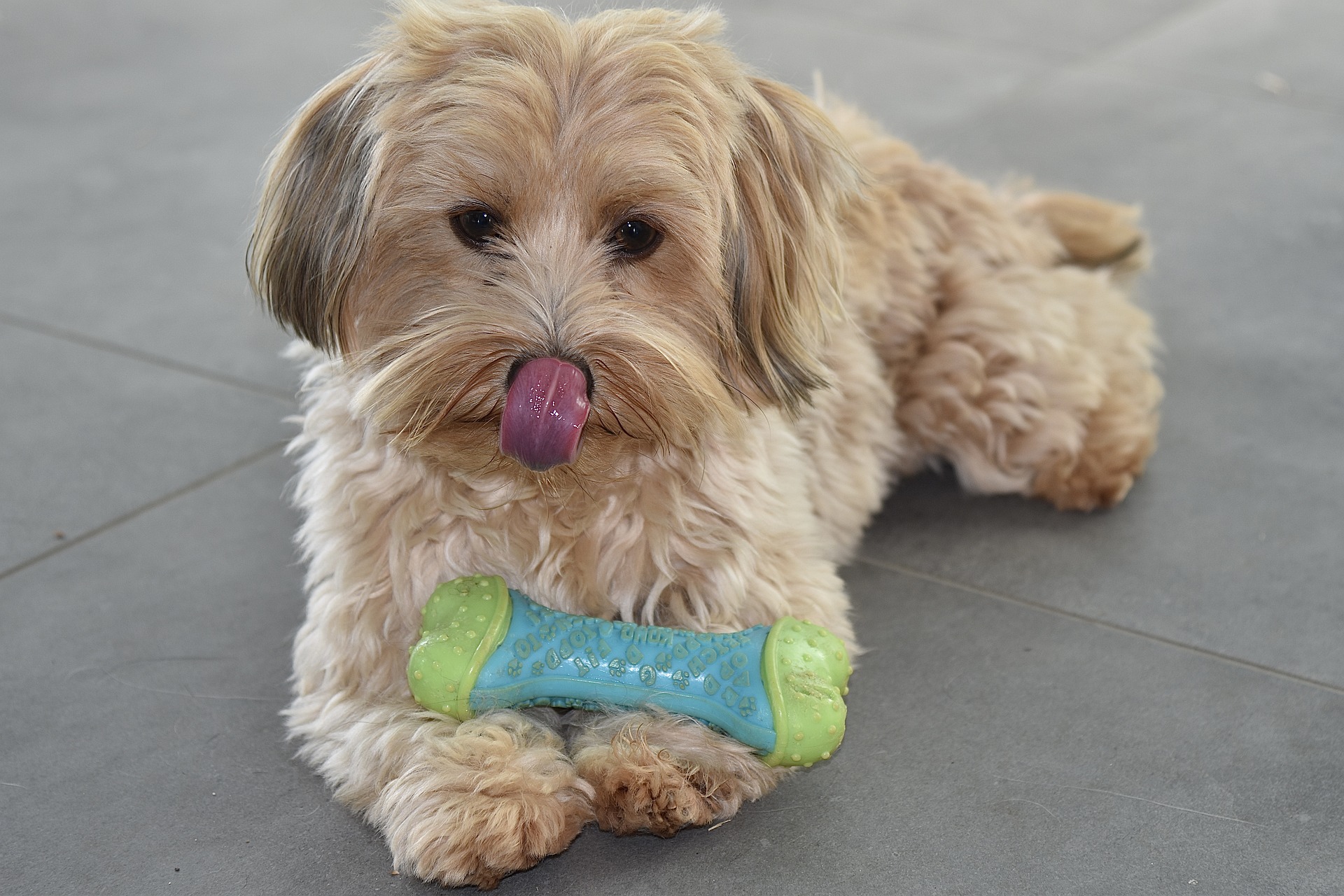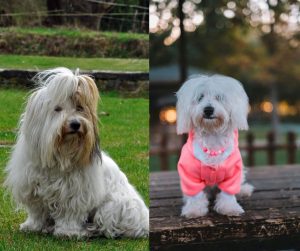When choosing between a Havapoo and a Havanese, prospective dog owners are often drawn to their adorable looks and lovable temperaments. While they share some similarities, these breeds can offer different experiences as pets.
The Havanese is a purebred known for its long history as a companion dog, originating from Havana, Cuba. It boasts a silky coat and a charming, friendly persona that’s been warming hearts for centuries. On the other hand, the Havapoo is a crossbreed that combines the Havanese with the Poodle, two breeds renowned for their intelligence and affectionate nature.
The physical and temperamental differences between these two breeds are distinct yet subtle.
Havapoos inherit the hypoallergenic quality of Poodles along with a typically curly coat, while Havanese have a wavy coat and may not be as suitable for allergy sufferers.
Both dog breeds are known for their social nature and can experience separation anxiety if left alone for extended periods, making them ideal for families who can offer plenty of attention and affection. Let’s take a deeper look into the Havapoo vs Havanese dog breed comparison.
Key Takeaways
- Havapoos and Havanese share a friendly demeanor, yet differ in coat types and allergen levels
- The Havanese is a pure breed with a long-standing history, while the Havapoo is a newer mixed breed combining traits of the Poodle and Havanese
- Consideration of lifestyle, family, and allergy sensitivity are important when choosing between these loving dog breeds
Breed Origins and History
Choosing between a Havapoo vs Havanese isn’t just about picking a pet; it’s a dive into two distinct lineages.
On one hand, there’s the storied past of the Havanese breed, ingrained in Cuban history. On the other, the more recent emergence of the Havapoo mirrors a modern trend in breed creation, blending the characteristics of established breeds for a new companion.
Havanese Heritage
The Havanese, a dog with a legacy deeply rooted in Cuba, is the only dog breed native to this country. Their history can be traced to the Bichon Tenerife, a breed that regrettably no longer exists.
Over centuries, these small but hardy dogs adapted to the local climate and culture, earning a cherished spot in Cuban society. Recognized by the American Kennel Club as a purebred dog, the Havanese has a DNA story that speaks to their resilience and longevity. They’re a breed with a rich background, beloved by many for their companionable nature.
The Havanese is in the same breed group as the Maltese, Bichon Frise, and Shih Tzu.
Havapoo Background
In contrast to their purebred cousin, the Havapoo is a delightful mix of Havanese and Poodle DNA, making them part of the “Doodle” family of dogs. Though specifics about their origin are less clear, the narrative of the Havapoo puppy began in the United States roughly a few decades ago.
The Poodle’s influence introduces traits like a hypoallergenic coat and a sharp intellect, while the Havanese side brings its signature sociability and warmth. As a crossbreed, they don’t have the same historical pedigree as the Havanese, but they’ve quickly found their place in the hearts of dog lovers who value the combined qualities of both breeds.
The Havanese Poodle mix is not recognized by the American Kennel Club. But many owners do not care about that. They just want a lovable pet that has a higher chance of being a hypoallergenic dog. That is thanks to their Poodle parent breed.
Physical Characteristics and Appearance
When choosing between a Havanese and a Havapoo puppy, one can observe distinct physical attributes that set them apart. Both breeds share an adorable demeanor, but their lineage plays a significant role in their appearance, from the texture of their coats to the shape of their tails.
Havanese Traits
The Havanese is a small yet sturdy dog, traditionally known for its long, silky, and sometimes wavy coat. They come in a variety of colors.
A standard Havanese typically measures about 8-13 inches in height and weighs in at 7-13 pounds. Their fur may require regular grooming to maintain its luxurious look. Notably, they have a characteristic tail that curls over their back and their eyes are almond-shaped, adding to their expressive gaze.
Havapoo Features
Havapoo dogs, a delightful mix between a Havanese and a Poodle dog breed, can have a variety of coat textures, from straight to wavy, taking after either of their parents. They can be mixed with a Miniature Poodle or a Toy Poodle parent.
Their size can vary more than the Havanese dog breed, with an average weight ranging from 7 to 20 pounds and a similar height range. Havapoos can boast a range of colors and typically have a low-shedding coat, thanks to the Poodle influence in their genetic makeup. Like the Havanese, Havapoos’ tails can be a distinctive feature, often having a slight curl.
Temperament and Behavior
When choosing between Havapoo vs Havanese, it helps to understand the nuances in their nature. These dog breeds share traits like friendliness and affection but show distinctive behaviors that can sway a decision based on a future owner’s lifestyle.
Havanese Personality
The Havanese shines with a friendly and affectionate demeanor. Renowned for being intelligent and eager to please, they often respond well to training, although they can have a stubborn streak.
Known for their playful disposition, they adapt well to various living environments—happy to be energetic playmates or calm companions. Havanese dogs typically exhibit:
- Outgoing nature: They’re sociable and do well with people and other pets
- Moderate barking: They alert to unfamiliar situations but are not overly noisy
- Loving behavior: They show a strong desire to be with their owners
Havapoo Disposition
The Havanese Poodle Mix inherits many of the same qualities as the Havanese, including being loving and smart. The poodle mix in them often boosts their intelligence quotient, making them quick learners. But they also inherit some of the genetics from their Poodle parent, be it a Toy Poodle or a Miniature Poodle.
Havapoos are just as social and enjoy companionship, but their adaptability to training might come in leaps and bounds because of their poodle heritage. Their typical behaviors include:
- Energetic and playful: They possess a lively spirit that thrives on active engagement
- Less prone to barking: Compared to purebreds, the Havapoo may exhibit more controlled vocalization
- Happy and well-behaved: They generally carry a sunny disposition into their daily interactions
Health and Lifespan
When considering a furry addition to the family, understanding health and lifespan is pivotal. Havanese and Havapoos generally enjoy a lifespan of 12-15 years; however, certain health issues are common in these breeds. It’s vital to acknowledge these concerns to ensure a healthy life for these lovable companions.
Common Health Issues in Havanese
The Havanese breed is known for its typically robust health, yet they are susceptible to several genetic conditions. Here’s a snapshot:
- Hip Dysplasia: A malformation of the hip joint that can cause pain and arthritis
- Patellar Luxation: The kneecap dislocates or moves from its normal location
- Cataracts: Can lead to impaired vision and potential blindness
They might also encounter deafness and heart issues. Regular check-ups with your vet can help manage these conditions and maintain their well-being.
Health Considerations for Havapoos
Havapoos, a mix between Havanese and Poodles, can inherit health issues from both parents. Some of these are:
- Hip Dysplasia: Can lead to discomfort and mobility problems
- Progressive Retinal Atrophy: This eye condition involves the gradual deterioration of the retina, potentially resulting in blindness
- Allergies: Can manifest as skin irritations or other symptoms
Additionally, these pooches may deal with Addison’s disease, an endocrine disorder, and hypothyroidism, affecting the thyroid gland’s functioning. Maintaining a schedule for health screening is beneficial in catching these issues early.
Care and Training
In considering Havapoo and Havanese breeds, they both demand attention to grooming and are receptive to training. Understanding their needs is key for a happy, healthy pup.
Exercise and Activity Levels
The Havapoo and Havanese share an energetic nature, yet their exercise needs are moderate. Both breeds thrive on daily walks and playtime to stay both physically and mentally stimulated.
- Havapoo: An active mix that delights in interactive games and excursions, the Havapoo benefits from:
- Daily walks: 20-30 minutes
- Playtime: Fetch, tug-of-war, and puzzle toys can keep them engaged
- Havanese: Naturally playful, Havanese dogs excel in agility and enjoy:
- Short walks: A couple of 15-minute walks per day
- Indoor play: They appreciate games that involve jumping and running
Training Techniques
Training a dog should always be based on positive reinforcement. Both Havapoo and Havanese respond well to this due to their eagerness to please.
- Havapoo:
- Socialization early helps curb separation anxiety, making them well-rounded pets
- Consistent training sessions cement basic commands and tricks
- Havanese:
- Acknowledged as being easy to train, they pick up on commands swiftly
- They thrive on positive feedback and treats while learning new behaviors
For grooming:
- Brushing: At least thrice weekly to prevent matting
- Bathing: Monthly or as needed, being careful not to strip natural oils
- Diet: High-quality food appropriate for their size and energy levels keeps them in top shape
Both dogs may exhibit high maintenance in grooming, with the Havapoo possibly inheriting the Poodle’s need for more frequent haircuts.
Care routines should encompass not only physical maintenance but also emotional care. They can be prone to separation anxiety if left alone for long periods. Regular companionship and attention are paramount for their well-being.
Suitability and Living Considerations
Choosing between a Havapoo and a Havanese for your family involves understanding each breed’s suitability for home environments and their interaction with family members, especially when it comes to companionship and exercise needs.
Considerations for Families
Havapoos and Havanese both thrive on companionship, making them ideal for families seeking a lively yet affectionate addition to their household.
When it comes to children, Havapoos are energetic and can keep up with the playfulness of young family members. Meanwhile, Havanese, being a bit more calm, may be suitable for families with both small children or older members.
However, families should consider the potential for separation anxiety in both breeds, as they deeply bond and prefer not to be left alone for long periods.
- Havapoos:
- Hypoallergenic: More suitable for families with allergies
- Life Expectancy: Around 12-15 years
- Exercise: Requires daily activities to burn off their energy
- Havanese:
- Lap Dog: Favors cuddles and being close to their human companions
- Life Expectancy: Ranges between 12-14 years
- Exercise: Needs regular but moderate exercise
Adaptability to Living Environments
Both the Havapoo and the Havanese adapt well to different living environments, including apartments and houses with or without yards.
Havapoos, being small and adaptable, can comfortably reside in smaller spaces as long as they receive adequate exercise to channel their energy.
Havanese dogs, also small in size, can fit into various living situations with ease, but they need to be provided with enough space to explore and play.
- Apartment Living:
- Both breeds can live in apartments if exercise needs are met
- Regular bathing and grooming are important to maintain their coat and reduce allergens. This is more so for the Havapoo, which may have inherited the Poodle’s coat
- Houses with Yards:
- A backyard provides a great outlet for a puppy’s high energy levels, but isn’t strictly necessary
- Breeders recommend secure fencing, as both breeds can be quite curious and might escape in search of adventure

